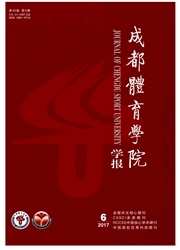

 中文摘要:
中文摘要:
“拳”作为中国武术的俗称,一直被人们接受和认可,早已成为中国武术的代名词.“势”作为一个思想史的概念,在政治、军事、书法、绘画、诗歌等诸多场域中表达一种相似的哲学思维与意义结构,它们为“势”文化的理论研究打开了广阔的论域空间.研究以“势文化”为切入点,以内家三拳为主要研究对象,通过文献资料、专家访谈、逻辑分析等方法,对“拳之势”进行理论探索.结果表明:架势是“拳之势”生成的结构之力;理势是“拳之势”生成的逻辑之力;气势是“拳之势”生成的生命之力;情势是“拳之势”生成的表达之力.习武演练自觉追求“势”,它体现的是一种美学之道与生命规律.
 英文摘要:
英文摘要:
" Quan" is a commonly used name for Chinese Wushu in China and "Shi" is a concept used in such fields as politics, military, calligraphy, painting, poetry, etc. ,expressing a similar philosophical thought and meaning structure, which in turn open up an infinitive possibility for the theoretical study of the’ shi’ culture. By way of literature,expert interview and logical analysis, the present paper, taking the three Quan of the internal School,namely the Xingyi Quan,the Taji Quan and the Bagua Linked Palm as examples,explores the‘Shi of the Quan’ . The study shows that "jia - shi" is the structural power from which the’ Shi of the Quan’ is generated; "Li - shi" the logical power; "Qi - shi" the life power and " Qing - shi" the the power of expression. Pursuing ‘ shi’ in Wushu practice embodies a Tao of aesthetics and law of life.
 同期刊论文项目
同期刊论文项目
 同项目期刊论文
同项目期刊论文
 期刊信息
期刊信息
